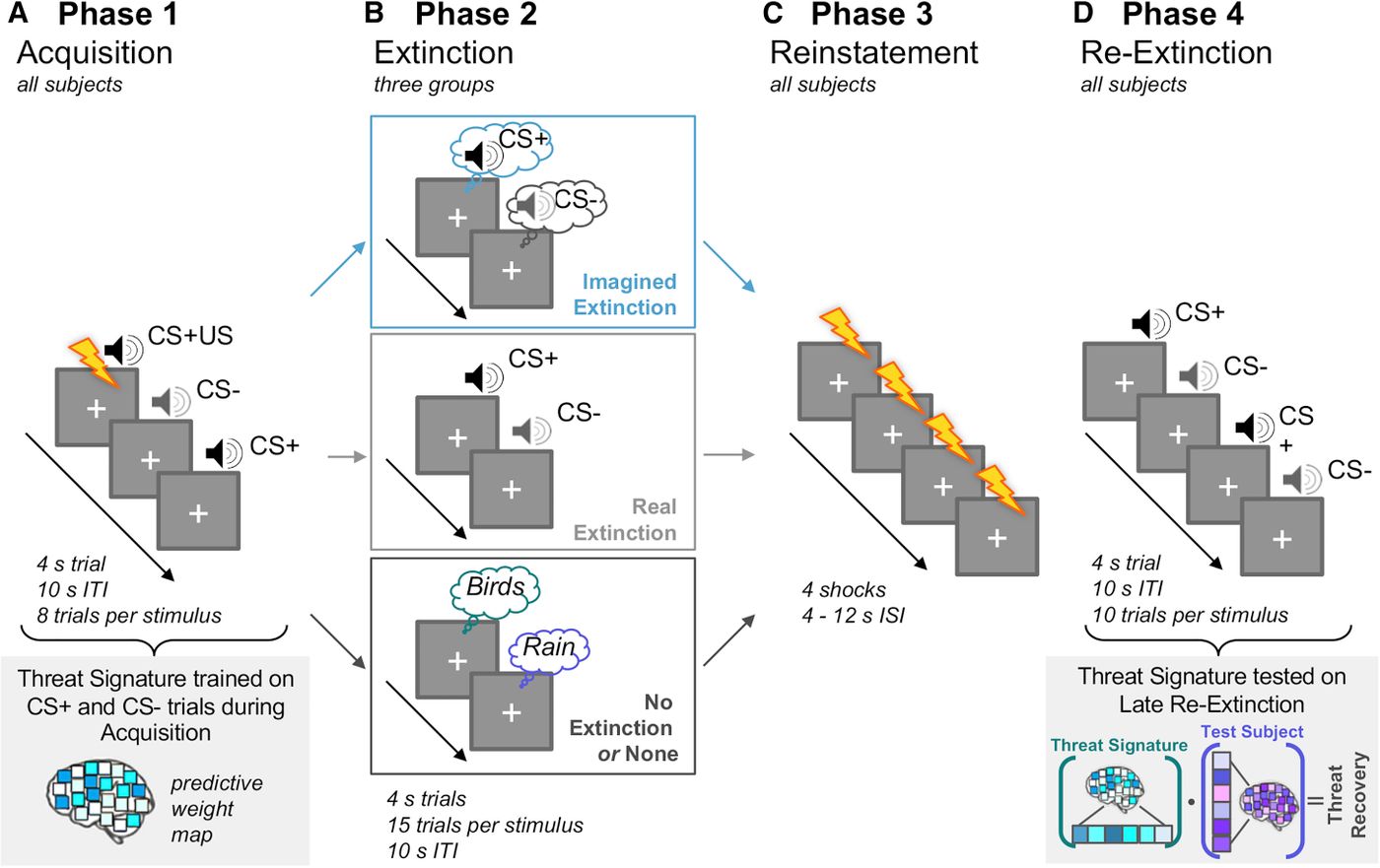Ventromedial Prefrontal Cortex Central For Imagination Mitigated Fear
Extinction; presenting fear in a neutral setting where the negative consequences are negated is one of the successful fear conditioning mechanisms. Exposing to fear in a more controlled environment allows the subjects to engage at their own pace. However, exposure therapy might not be practical always as the same conditions associated with the fear cannot be re-created. Imagination is unique and creates essentially the same conditions when being exposed in a controlled setting.
Research conducted at the Icahn School of Medicine at Mount Sinai and published November 21 in the journal Neuron focuses on elucidating the differences between learned and unlearned fear and how imagination helps with threat-extinction. Imagination therapy is quite popular in clinics. However, the cognitive phenomenon that conditions the emotion and learning were not known. Further, using imagination to mitigate fear conclusively was not established so far.
Previous studies have linking extinction behavior to the ventromedial prefrontal cortex(vmPFC), hippocampus and amygdala, nucleus accumbens(NAc) and perceptual circuitry. The authors hypothesized imagination induced threat conditioning will involve vmPFC, hippocampus, amygdala, and NAc. And in the absence of real threat imagination will activate the same pathways thereby priming the neural responses to real threats.
Sixty-eight healthy adults of either gender with an average age of 20 years were recruited for the study. Subjects underwent shock-related fear conditioning with auditory cues. All the subjects were then randomly divided into three groups based on their extinction training sessions (imagined, real, or no extinction). Skin conductance, neuroimaging scans were collected during experiments. Schematic of the protocol and methods is shown below.
A linear support vector machine trained on subject-wise brain activation maps was sued to create a neural threat-predictive pattern and then was compared across the three groups.
“We found that imagined extinction and real extinction were equally effective in the reduction of threat-related neural and physiological responses elicited upon re-exposure to real-world threatening cues,” says Daniela Schiller, Ph.D., Professor of Neuroscience and Psychiatry at the Icahn School of Medicine at Mount Sinai and senior author of the paper. “More specifically, neuroimaging results indicated that imagined extinction, like standard extinction, activated a network of threat suppression involving the ventromedial prefrontal cortex as a central hub.” The image below shows the neural connectivity network for imagined vs. real extinction.
The study findings suggest that imagined extinction alters learned threat responses by updating the value representations associated with the controlled stimulus via interactions among, auditory cortex, vmPFC, amygdala, and NAc. The authors propose two mechanisms in how the imaginary extinction works to change the values.
- New Learning Mechanism: By mimicking the true fear stimulation and forming neural pathways between vmPFC, amygdala, NAc, and hippocampus. Or by influencing the belief formation through regulation of the emotion.
- As Unlearning Mechanism: Altering the learned threat associated patterns by repeated imaginary threat conditioning.
“Our data indicate that an internal simulation of a real-world experience can alter the way one responds to that situation in the future,” says Dr. Schiller. “These novel findings bridge a long-standing gap between clinical practice and cognitive neuroscience by validating the effectiveness of imagination-based therapies targeting anxiety disorders and extending our knowledge of how mental actions can influence basic neural circuits.”
Watch the video to understand the neurobiological processes of fear conditioning and fear extinction.









